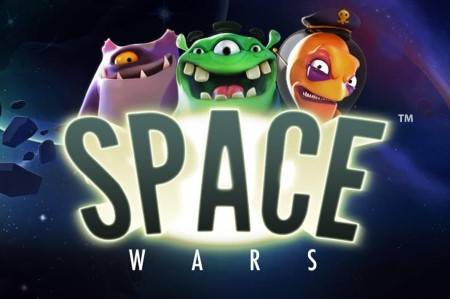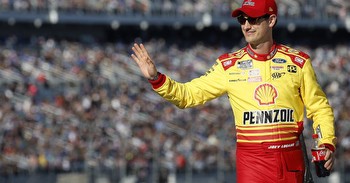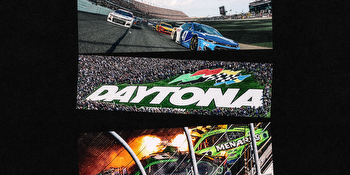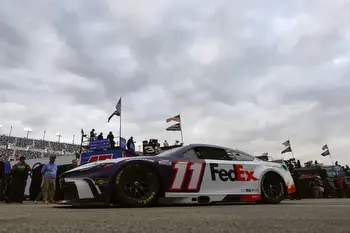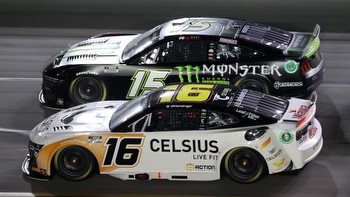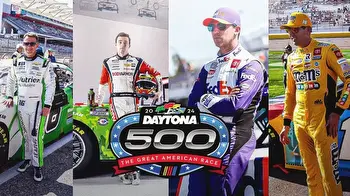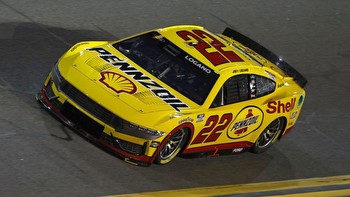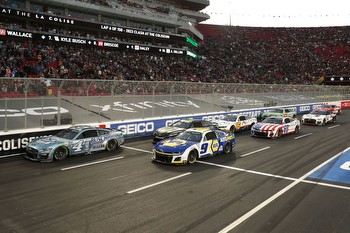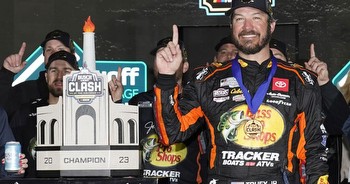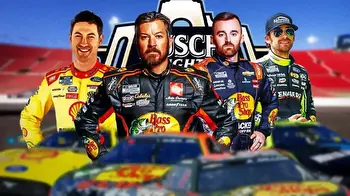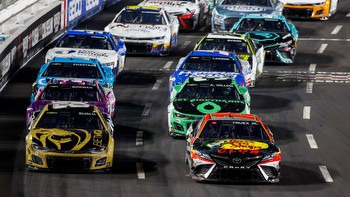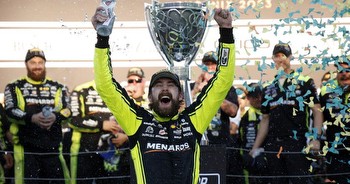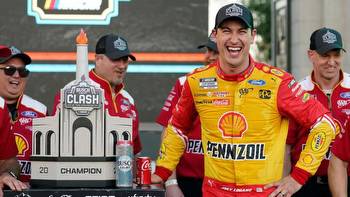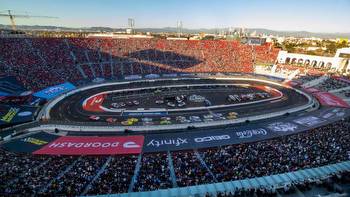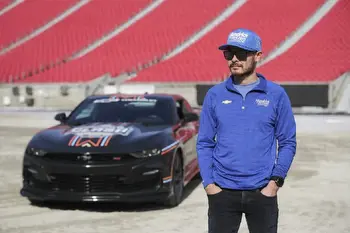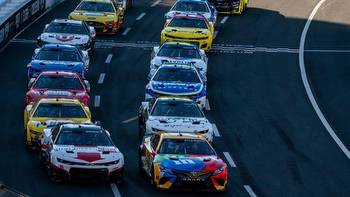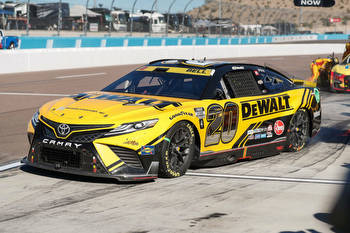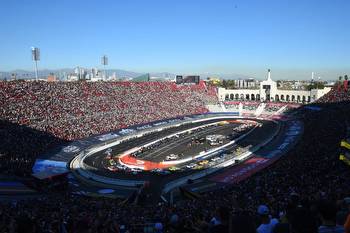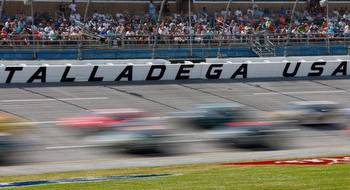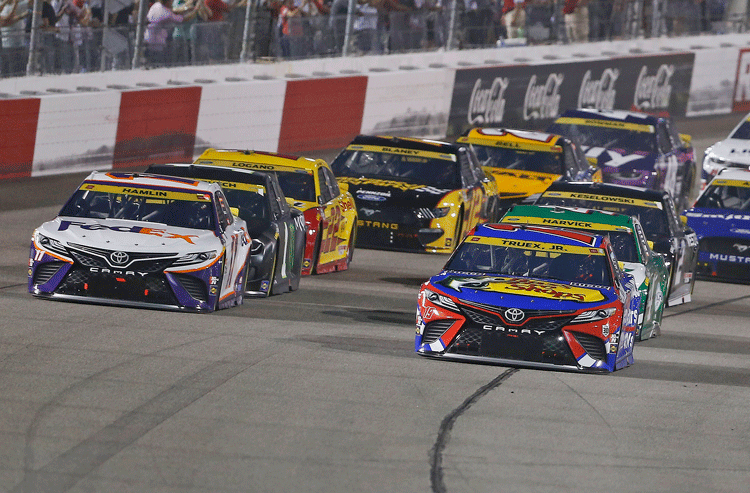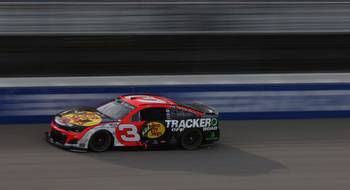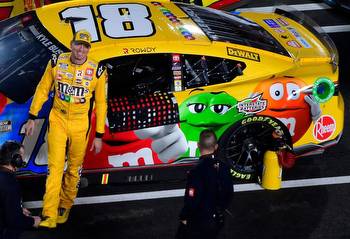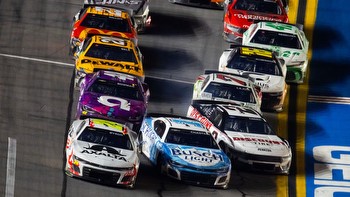2023 Busch Light Clash preview, format, schedule, entry-list, etc

NASCAR is back. The shortest offseason in sports is coming to a conclusion with this weekend’s Busch Light Clash. Here’s some important information to use for the NASCAR Cup Series exhibition event.
Schedule
Saturday:
6 pm ET: Practice (3 groups)
8:30 pm ET: Qualifying
Sunday:
5 pm ET: Heat Race 1 (25 Laps)
5:15 pm ET: Heat Race 2 (25 Laps)
5:30 pm ET: Heat Race 3 (25 Laps)
5:45 pm ET: Heat Race 4 (25 Laps)
6:10 pm ET: LCQ 1 (50 Laps)
6:35 pm ET: LCQ 2 (50 Laps)
7:05 pm ET: Concert
7:50 pm ET: Driver Intros
8 pm ET: Busch Light Clash (150 Laps)
Format
Eligibility includes all 2023 NASCAR Cup Series Charter Team Owners and associated NASCAR Cup Series Drivers. 2023 NASCAR Cup Series Open Team Owners and associated NASCAR Cup Series Drivers are eligible to enter and compete for the four (4) additional starting positions.
Busch Light Clash at The Coliseum Qualifying:
- Single vehicle qualifying will occur on Saturday, February 4th following the scheduled practice.
- Qualifying will be single vehicle one (1) round, 3 laps, one (1) warm-up, two (2) timed.
- Qualifying order will be determined by 2022 Owner Points (lowest to highest).
- If there are more than 40 entries to this Event, the fastest four (4) open teams will transfer into the Heat Races.
Heat Races – 4 Heat Races / 25 Laps each
- Only completed green flag laps will be counted toward the official race distance
- Heat race lineups will be set by Qualifying
- Fastest qualifier – Pole for Heat 1
- Second fastest qualifier – Pole for Heat 2
- Third fastest qualifier – Pole for Heat 3
- Fourth fastest qualifier – Pole for Heat 4, etc
- The top five (5) from each race advance through to The Clash
- Remaining five (5) finishing positions from each heat continue through to the Last Chance Qualifier Race 1 and the Last Chance Qualifier Race 2 with their starting position being determined by where they finished in their heat races.
Last Chance Races – 2 LCQ Races / 50 Laps each
- Only completed green flag laps will be counted toward the official race distance
Last Chance Qualifier Race 1
- Those that did not advance from Heat 1 & 3.
- The 6th place finisher from Heat 1 will be on the Pole.
- The 6th place finisher from Heat 3 will be on the outside Pole.
- Lineup – Inside row positions 6-10 from Heat #1. Outside row positions 6-10 from Heat #3
Last Chance Qualifier Race 2
- Those that did not advance from Heat 2 & 4.
- The 6th place finisher from Heat 2 will be on the Pole.
- The 6th place finisher from Heat 4 will be on the outside Pole.
- Lineup – Inside row positions 6-10 from Heat #2. Outside row positions 6-10 from Heat #4
LCQ 1 & 2
- Top three (3) from both LCQ 1 and LCQ 2 advance through to The Clash.
- The remaining drivers are eliminated from the remainder of the Event.
The Clash
- Only completed green flag laps will be counted toward the official race distance
- 27 Drivers will start The Clash main event.
- 26 starting drivers are locked in through their finishes in the heat races, LCQ 1, and LCQ 2.
- 27th and final spot is reserved for the driver who finished the highest in the 2022 season points standing who did not already earn a starting position in The Clash.
- Last year, 23 cars started main event.
Metals Awarded To Podium Finishers
A NASCAR first will occur on Sunday, Feb. 5. The sanctioning body announced today that the top-three finishers in the Busch Light Clash at the Coliseum will be awarded gold, silver and bronze medals.
The medal ceremony will take place on a podium in Victory Lane, which is located beneath the Olympic cauldron at the historic Los Angeles Memorial Coliseum. Ben Kennedy, NASCAR’s senior vice president for racing development and strategy, will present the medals to cap off this historic event.
“These will be tremendous prizes for our drivers who are competing inside a venue that’s hosted two Olympic Games and is preparing for a third,” Kennedy said. “Not only do the medals honor the rich tradition of this stadium, but they also provide a special element unique to NASCAR’s 75 anniversary.”
Jostens will produce these exquisite medals, along with the Busch Light Clash at the Coliseum Trophy that’s presented to the winner of the season-opening exhibition. Each custom-crafted keepsake features the Busch Light Clash at the Coliseum logo beautifully embossed on one side. The other side features the Coliseum’s centennial mark and the NASCAR 75 Anniversary logo.
The race winner’s medal weighs 4.7 ounces and is covered in 24-karat plated gold. It will certainly gleam beneath the Coliseum lights and iconic flame that towers above the temporary, quarter-mile asphalt track.
Why The Move From Daytona To A Football Stadium
NASCAR has drastically made a change to the way the Busch Light Clash is ran. From 1979 through 2019, it was annually held on the high banks of the 2.5-mile Daytona International Speedway. In 2021, they moved it to the road course. Now, it has moved across the country to a football stadium.
Why? How did we get here?
It grew to be a mess in Daytona and lack luster as the years went by.
The main problem was, holding it on the Daytona oval didn’t make a whole hell of a lot of sense anymore. It had become the Busch Crash instead of the Clash. Most, if not all cars in the field, would end up with crash damage which made the event very expensive for race teams.
See, if you were in it, there’s no way you’d bring your Daytona 500 car for it. You’d have to prepare a completely different throw away car for the Clash and then prepare a new car for the Daytona 500. Throw in a backup car for the ‘500 and the big teams were bringing three cars down to Daytona for Speedweeks.
The other thing is, the Clash went away from what it initially was founded off of. This was a race for pole winners only. Now, it had been expanded and extended from the original 20 lap format.
The original concept for the Busch Clash was for a Sunday afternoon show a week before the Daytona 500 and to fit it all in during a half an hour TV window on CBS. Well, the race had become 55 laps longer than the inaugural event in 1979, in recent year, was as boring as ever until a crap show at the end.
Due to the distance and like in 2019 having only 18 cars racing in it then, why put yourself in harms way by drafting early and often? With a guaranteed caution coming on Lap 25, you could ride around in a high speed parade and keep your car clean for the end.
That’s what happened the last two years on the oval.
The first segments were full of 18 cars running in tow with one another. The second segment was run with cars trying to save fuel until the end, then having manufacturers pit together.
From there, it was the usual crash fest in the end. Just look at how the last one on the oval ended. We’d see a six car crash that was sparked by a block by Joey Logano with 10 laps left in regulation. Then, on the restart with three laps remaining in regulation, we saw a bizarre crash in the tri-oval between nine cars. From there, a crash on the first overtime restart when Denny Hamlin cut a tire while leading, took out 10 more cars which was followed by a three car crash on the next restart.
That left six cars on track for the third overtime, one of which being a lap down.
So, I ask, why race for 75 laps when 65+ of them are run single file and we get every car crashed in the end?
I mean when you show up with 18 cars for this race and all of them have damage, there’s a problem. In 2018, 17 of the 20 cars crashed in one accident at the end before the rain fell too.
That’s 38 cars and 35 of them crashed in a two year span.
So, NASCAR moved the race from the oval to the road course in 2021. That felt awkward. Having a road course race during Speedweeks. The attendance was dismal and so was the rating.
Fox Sports 1 saw 1.577 million viewers for the 2021 Clash in primetime on the road course. That was down almost 1 million people as 2.455 million tuned into the 2020 Busch Clash. Granted, the 2020 race was on the oval and was held on a Sunday afternoon compared to a weeknight in 2021. It still shows that doing the same thing again in 2022 wasn’t going to be ideal.
So what do you do? Cancel it all together? NASCAR elected one last gasp to save the Clash and did so by moving it across the country to a football stadium.
It proved that it was wise to move it.
Last year’s exhibition race that was held at the Los Angeles Memorial Coliseum drew a 2.32 rating which equated out to 4.283 million. The 2022 Clash outdrew 2021’s by almost 3 million people and nearly doubled the last one held on a Sunday afternoon on the Daytona oval.
“I said it all along, this isn’t the Next Gen car, this is Next Gen NASCAR,” Joey Logano said ahead of last year’s race. “Everything is different.”
This move to the Coliseum gives the spark to the event back again.
“This is probably going to be the most highly rated Clash of all-time I bet,” Logano continued. There’s more people talking about the Clash this year than ever. Probably because we’re doing something different.”
70% of the attendance last year were first time ticket buyers to a NASCAR race. The estimated attendance was north of 50k and some reports of 60k+. That’s huge for this race. See, the Clash had become to dull and stagnant that they struggled to get 10k to walk through the Daytona gates to witness it. The 2021 race on the road course struggled to get to 7k.
Plus, this is now done on the week before the Super Bowl which gives sports fans something for that open Sunday afternoon. There’s no NFL playoffs or even the Pro Bowl anymore. NASCAR has found a perfect spot on the calendar for this.
Not much has changed to the actual track itself between last year and this time around in the LA Memorial Coliseum other than USC Football played their entire home schedule on it. Yes, the track from last year was broken up, sod put back down and the venue changed back to a multi-purpose sporting facility within a month from the checkered flag dropping the inaugural Busch Light Clash a year ago. Now that football season has once again concluded, the track surface has been rebuilt to the exact configurations as it was a year ago.
So, with just one year with this unique race format and the cars/venue being the same for the second go around, I don’t expect much difference in terms of how things will look in 2023 as it did in 2022 in regard to the track analysis.
Some places you’ll see an aged surface get a year older, or a change to the tire compound or even a change to how the cars are setup on that specific venue, but for the Clash, it’s status quo from an exhilarating event in 2022.
The only thing I do think will look different, is that these drivers are going to be more comfortable. Last year, was the first year of this new Next Gen race car. It raced different, but most notably, it shifted different.
These cars used to be your typical H pattern gear shifting mechanism’s. Sort of like you’d see in a street car. Last year, it was a sequential shifter on top of a fifth gear being added. That threw the veterans for a loop because they had to retrain themselves on how to race these cars. Plus, the first ever race for all of these drivers and teams inside of a football stadium, no one knew entirely what to expect. Now, they do…
Last year Team Penske’s Joey Logano took the first victory in the Coliseum as he enters as not only the defending race winner, but is also the defending series champion too. Can anyone knock him off on Sunday?
Busch Light Clash Trends:
• Starting position mattered in the qualifying races last year.
• The Top-4 qualifiers from qualifying a night before started on the pole for each of the four heat races. Each of those four drivers led every single lap of their heat race to advance to the top four starting positions for the main event. This is something to keep an eye on Saturday in terms of qualifying times and the final order as well as if you’re live betting on Sunday, for whom to wager on for the main event.
o The fifth place starter in all four heats also finished fifth in those races too.
• 2 of the 4 heat races saw the entire Top-4 of the starting lineup take the four transfer spots to the main event.
o Starting spots of cars that advanced through heats and LCQ’s last year.
▪ 1-2-3-4 (Heat 1)
▪ 1-7-6-2 (Heat 2)
▪ 1-3-4-2 (Heat 3)
▪ 1-2-3-6 (Heat 4)
▪ 1-4-2 (LCQ 1)
▪ 4-1-7 (LCQ 2)
• In the main event though, the 4th placed starter won and the pole sitter finished 2nd. They were the only top 5 starters to even finish in the top 13 though. 8 of the top 12 finishers in the A-Main started 10th on back.
